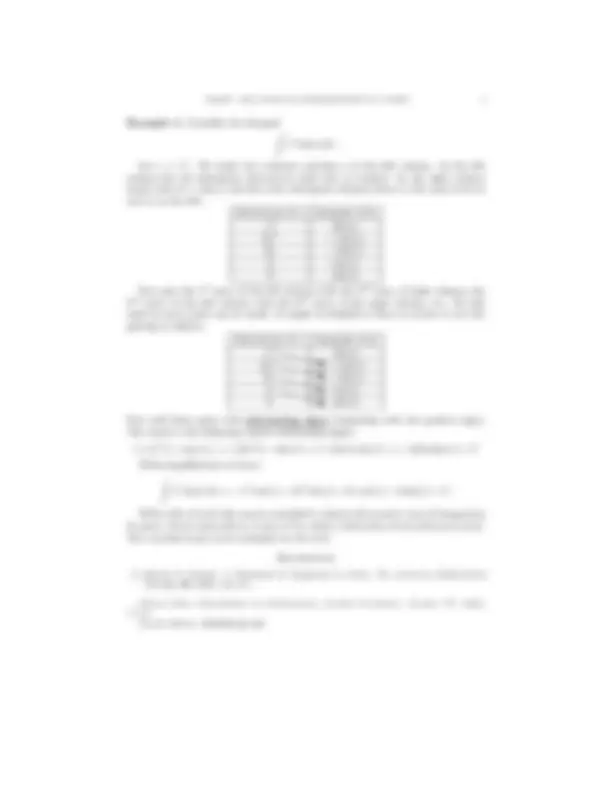



Study with the several resources on Docsity

Earn points by helping other students or get them with a premium plan


Prepare for your exams
Study with the several resources on Docsity

Earn points to download
Earn points by helping other students or get them with a premium plan
Community
Ask the community for help and clear up your study doubts
Discover the best universities in your country according to Docsity users
Free resources
Download our free guides on studying techniques, anxiety management strategies, and thesis advice from Docsity tutors
The liate method is a rule for integration by parts, helping to determine which function should be used as u and dv. Examples and exceptions to the liate rule. Tabular integration by parts is an alternative method for recursive integration by parts.
What you will learn
Typology: Exams
1 / 3

This page cannot be seen from the preview
Don't miss anything!


The LIATE method was first mentioned by Herbert E. Kasube in [1]. The function that appears first in the following list should be u when using integration by parts:
L Logatithmic functions ln(x), log 2 (x), etc. I Inverse trig. functions tan−^1 (x), sin−^1 (x), etc. A Algebraic functions x, 3x^2 , 5x^25 , etc. T Trig. functions cos(x), tan(x), etc. E Exponential functions ex, 2x, etc.
Example 1. ∫ x sin(x)dx.
Following the LIATE method, u = x and dv = sin(x)dx since x is an algebraic function and sin(x) is a trigonometric function. Therefore,
u = x dv = sin(x)dx du = dx v = − cos(x)
and ∫ x sin(x)dx = −x cos(x) −
(− cos(x))dx
= −x cos(x) + sin(x) + C.
WARNING: This technique is not perfect!
There are exceptions to LIATE. Some of these can be solved using the order “ILATE” instead. Sometimes, something completely different needs to be con- sidered.
Example 2. ∫ x^3 ex
2 dx.
Following the LIATE rule, u = x^3 and dv = ex
2 dx. However, we would actually set u = x^2 and dv = xex
2 . u = x^2 dv = xex
2 dx du = 2xdx v = 12 ex 2 1
and so ∫ x^3 ex
2 dx = x^2
ex
2
ex
2 2 xdx
x^2 ex
2 −
xex
2 dx
x^2 ex
2 −
ex
2
=
ex
2 (x^2 − 1) + C.
Example 3. (^) ∫
sec^3 (x)dx.
Following the LIATE rule, u = 1 and dv = sec^3 (x)dx. However, we would actually set u = sec(x) and dv = sec^2 (x).
u = sec(x) dv = sec^2 (x)dx du = sec(x) tan(x)dx v = tan(x) and so ∫ sec^3 (x)dx = sec(x) tan(x) −
tan^2 (x) sec(x)dx
= sec(x) tan(x) −
(sec^2 (x) − 1) sec(x)dx
= sec(x) tan(x) −
sec^3 (x) − sec(x)
dx
= sec(x) tan(x) −
sec^3 (x)dx +
sec(x)dx
= sec(x) tan(x) −
sec^3 (x)dx + ln | sec(x) + tan(x)|.
Since the integral we are solving reappears, we need to add it to the left side to get
2
sec^3 (x)dx = sec(x) tan(x) + ln | sec(x) + tan(x)|.
Finally,
∫ sec^3 (x)dx =
sec(x) tan(x) +
ln | sec(x) + tan(x)| + C.